Terry Lewis
Timothy Leyden
Johnny Lira

Our father, Johnny Lira, was more than a boxer.
He was an activist who rallied on behalf of boxers, having founded S.P.A.R.T.A (Sports Professionals and Amateurs Resolving To Achieve), trying to get people to come around and see how badly they needed a pension and union, and how ridiculous it was that they didn’t already have one. He was a silly father with firm convictions, a son who adored his mother, a brother who loved his sisters, the uncle every child loved to see come around at family functions and goof off, a mentor to people whom he so deeply wanted to help, whether training a boxer or martial artist, or providing tools to help navigate through the boxing world, an actor (“Gladiator” with Cuba Gooding Jr. and the History Channel’s “Who Shot Martin Luther King, Jr.”), a friend (always ready with a crazy story or joke) dabbler of local politics, teller of riddles, boxing promoter. But perhaps his most favorite role later in life was that of loving father and grandfather. You’ve never seen someone light up so brightly as he did when he was able to be around his three daughters, son and his grandchildren. His grandchildren all adored him SO much.
Johnny, the “World Class Pug,” was a fighter in more ways than one. If he wasn’t fighting for himself he was fighting for someone else and we were raised seeing that. He was passionate about hard work and he swore that anything was achievable. That everyone has the potential to succeed. You were never able to say, “I can’t” to him. Priceless lessons.
He was born in Chicago, Illinois, to Duiko Lira and Delores DeRose Lira in 1951 and was a red-headed and freckle-faced trouble maker and the youngest of three children. That mischievous streak continued into adulthood and, honestly, led him to his boxing career.
His amateur career started in Chicago boxing at the Chicago Youth Organization (C.Y.O. gym) training under Harry Wilson and corner man Chuck Bodak. He went on to compete and win in the Chicago Golden Gloves in 1974 and 1975 as a welterweight and middleweight and after turning professional, he relocated to Las Vegas, Nevada, to train under the legendary Johnny Tocco.
Johnny Lira went on to become the United States Lightweight Boxing Champion (Hawaii 1978) with an impressive record of 29 wins, 6 losses, 1 draw and 16 knockouts.
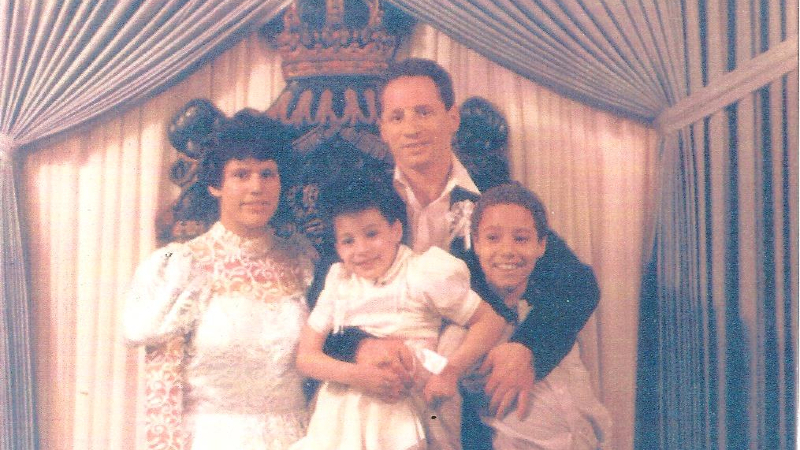
Our father had a very close relationship the Union League Boys Club (club #2) throughout his whole life, a youth club member, staff member, volunteer, mentor, and in the late 1970s he was the head boxing coach. Later he went on to work for the Chicago Park District as the boxing supervisor for the citywide boxing program. He loved kids and believed so firmly that children, especially ones with few options or many disadvantages, should be given an outlet, something that teaches them hard work and discipline while boosting self esteem and pride. That was why he believed boxing was a great tool for kids.
He was a judge, referee, corner man and trainer for both boxing and martial arts. Promoter of 2 televised boxing events that were on national television. He loved to travel, learn new things, meet new people, and charm them with his crooked nose and sneaky smile. With his charm and smile he would impress people with his wide and unique range of self-taught knowledge.
On December 8, John “Johnny” Lira, “World Class Pug,” “Italian Rose,” “Character Extraordinaire” (as noted on his business cards!) left us, and left behind a great legacy in the Chicago and has made a print in the world of boxing.
Even though that sneaky smile and chuckle of his is no more, the things he left us with are more than we could have dreamed. He wasn’t perfect, no one is, but he was so loving, so encouraging and the biggest fan to each of his children, grandchildren, nieces, nephews, godchildren, kids/teens he mentored and he really believed in them. Never a phony. Kids can smell phony a mile away, and when someone who shines as brightly as our father did, he would tell you that you’re great, smart, strong and beautiful – the effect that has is something that can’t be matched! He has taught us so much, always preparing us for anything in life, teaching us chess, boxing, swimming, business, self-respect and having a touch of class.
He will be missed so much.
We are all so proud of him and his accomplishments, and his last gift of his brain donation. It added some closure to some of the tough stuff that we had to go through. We are so glad to be able to maybe help, even a little, further the research to help bring awareness to CTE.
Thank you, Boston University.
Miss you Dad
Listen to Johnny’s daughter, Gina, discuss his story on Jill Hopkins’s “Mixtape” radio show here. Watch his daughter Nina share his story on ABC7 Chicago.
Tony Liscio
Meiko Locksley
Doug Long
Michael Lopez
Ron Lorentzen

Ron Lorentzen played middle and high school football in Port Angeles, Washington. He went on to become a cheerleader at the University of Washington and served as a Seabee in the Vietnam War. Around 2002, Lorentzen began to struggle with his memory and other neurological issues. He died on September 16, 2019 at 75 years old. After his death, his brain was studied at the UNITE Brain Bank, where researchers diagnosed him with Stage III (of IV) Chronic Traumatic Encephalopathy (CTE). His first wife Sandy wrote his Legacy story to share how CTE afflicted Ron in the hope his tragedy can prevent future cases of the disease.
Our big question now has an answer – Ron suffered from Chronic Traumatic Encephalopathy (CTE), Stage III (of IV). Thanks to the VA-BU-CLF Brain Bank, I also realize there was no saving him. The timebomb had been ticking for perhaps a decade before we met. Unanswerable questions remain. Could we, would we, have lived differently, knowing middle and high school football would be his undoing? Comparing Ron’s fate to most others in the Legacy Donor Gallery’s Youth and High School section, so many dying in midlife or early adulthood, and worse, in their teens, I find a new definition of lucky. At least Ron got to live out seven decades, albeit often in poor health.
Back in 1966, two quarters before college graduation, his life was upended by skipping a second ROTC reserve weekend to study for finals. He wound up in boot camp three weeks later and then the Seabees, attached to a Marine construction battalion on the Chu Lai and Phu Bai military bases in Vietnam.
After two eight-month tours of duty, Ron returned to the classroom. We met then and married a few months later. He was funny and kind. Getting acquainted, he spoke little of Vietnam, more about his happy high school years, mostly on the football field as a defensive linebacker and offensive halfback. He was voted honorary co-captain and was admired for going all out, winning the inspirational player award twice.
Off the field, he had been involved in everything; named Boy of the Year by a civic club, junior class president, homecoming royalty, and parent student council member. Too small of stature to play college ball, he joined the University of Washington cheerleading squad and served as pledge chairman for his fraternity. He brought home two medals from the war, both awarded to him for diving competitions in the Olympics of Hue, imperial city on the Perfume River. On separate outings, I watched him save a toddler from being swept into the ocean, and a young man he noticed floundering in a river’s eddy.
With the war and college now over, everything seemed possible. Ron landed a job at a Seattle advertising agency and then segued into broadcasting, eventually becoming a producer. We discovered classical music, theater, and art galleries. He developed new talents such as drawing freehand pen and ink replicas of buildings, calligraphy, constructing furniture, and remodeling. He built a darkroom in our apartment and became a fine photographer.
Symptoms of ulcerative colitis began by age 30. In 1999 his colon was removed, and miraculously his gout disappeared too. He anticipated, at last, a life free of pain. A biopsy performed during the surgery revealed primary sclerosing cholangitis, an inflammatory condition of the liver diagnosed in children and adults. More than 75 percent of people with PSC also have colitis, and a liver transplant is the only cure. He gave no thought to this new potential death sentence. By then, we had gone our separate ways. He had become a San Francisco TV talk show producer and married the host.
They were retired, living in wine country with a summer home on the Russian River when Ron’s CTE symptoms surfaced in 2002. He awoke one morning confused, suffering from what ER notes described as “global amnesia, an episode of sudden transient memory loss and lightheadedness.” Quizzed on examination, he got the year wrong, he couldn’t remember the president’s name or recall three objects after five minutes, but he was able to correctly interpret a proverb and count backwards from 100 by sevens. A few months later, he felt lightheaded on the golf course. Seven months after that, he experienced what was diagnosed as a complex partial seizure and prescribed an anti-convulsant. From then on, Ron’s life became a maelstrom of emergency room visits for neurological symptoms that came and went, a battle with alcoholism and a dissolving marriage.
In 2011, Ron’s niece Jennifer began inquiring about his well-being. She learned divorce papers had been filed and after a third in-patient rehab, Ron was transferred to a Santa Rosa group home. Recently fired for slipping Ron liquor, a female staffer was continuing to ask him for money by phone. Unwilling to let this be his fate, we decided to go rescue him.
To sort things out, Ron moved in with Jennifer and her family in Arizona. As his health continued to decline, he needed more help, so after a few months he moved to a group home in Scottsdale. There he remained. Cloistered from life itself, he easily maintained sobriety, rarely left his bedroom, and talked to Jennifer and me by FaceTime. We spoke 20 times a day in his last two years. During our divorce so many years before, we said maybe we could be happy together again when we were old, and in a way, that’s how things turned out. It mattered not that I lived far away, had a new partner and a daughter. To us, divorce seemed a technicality when it came to the vow of in sickness and in health.
In February of 2019, the group home called to say Ron was losing weight. By July, hospice was suggested. Never one to complain, he remained his usual sunny self on FaceTime, so this alternate reality felt more like a dream. When Jennifer and I visited in August, he was subdued but seemingly comfortable. We held hands, talked about the upcoming election, about old times, and listened to our favorite music. I asked where he thought we should donate our bodies when our time was up. For him, the Boston University Brain Bank was the obvious choice since he had mentioned many football concussions. After games, Ron said he would sometimes wake up on the school bus heading home with no recollection of coming off the field.
Do people know they are about to die? If Ron did, he did not let on. Two months before, perhaps he had an inkling. One evening he said he thought we should separate. Since we lived in different states and almost never saw each other, I asked why. In the preceding months, Ron’s speech had become somewhat garbled and I would often ask him to repeat himself. He explained he thought my mind was so much deeper than his. Maybe he was having trouble following some subject I had blathered on about in a previous conversation. But he called again twenty minutes later and again said we should separate. Was it his way of letting me know we soon would? Maybe it meant nothing. His final evening over a stretch of several hours, he called 50 times and then we said good night. At 3 a.m., he went to the bathroom, returned to his room, and died in bed. I’m comforted by the idea that until his final minutes when he vomited blood, Ron may have thought it was a night like any other, and if he was in pain, he didn’t know it was his last.
His life was exuberantly and tragically lived. Knowing that his fate might now help improve the lives of others with CTE, or better still prevent the condition, would give him great satisfaction, and in that, there is solace.
Edward Lothamer
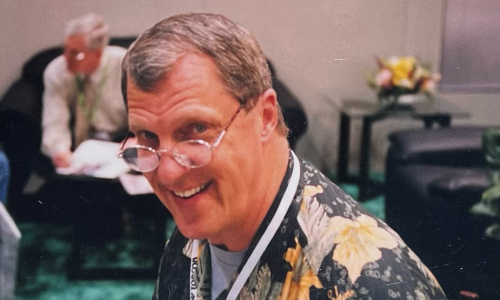
Ed was born in Detroit, MI in May 1942. He was the only child of Edward Sr. and Barbara. As a young man he was dealt a lot of challenging hurdles. His mother, who was his only parent present in his life for the most part, was stricken with cancer in her 30’s and so she and “Eddy” moved in with his maternal grandmother to help ease the burden of supporting his ill mom and himself at that time. His grandmother was the one person he credited for raising him. Those of us who knew Ed believe that that strong female influence molded him into the exceptional man he turned out to be.
Ed thrived in basketball and football his teenage years, with his height reaching 6’5″. He attended Redford High School in Detroit from 1956-1960. He earned a football scholarship to Michigan State and played for the Spartans from 1960-1964, earning his degree in Education. Due to his family’s ongoing unfortunate circumstances, they never saw Ed play a game in college. In 1964, Ed was drafted by both the Baltimore Colts and the Kansas City Chiefs. He was preparing for the move to Baltimore when Lamar Hunt, the owner of the Kansas City Chiefs, showed up at his dorm room and convinced him to come and play for Kansas City instead.
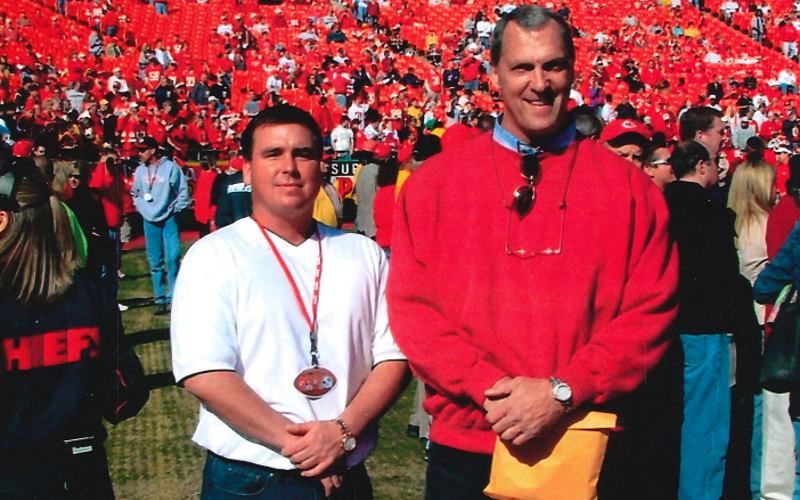
Ed played the majority of his professional career as a defensive tackle, #82. He played for eight seasons and enjoyed a lot of memorable bonds with his teammates during those years and beyond. Kansas City became home for Ed throughout those years with the Chiefs. In the offseasons he owned a couple of popular nightclubs to make ends meet for his growing family. Ed loved music his whole life, especially live bands, and talked of spending many long evenings hanging out with the singers and bands he hired from all different places, to play in his bars.
In March 1971 he married the love of his life, Elisabeth. He retired from the Chiefs the first time that year, but his coach, Hank Stram, asked him to reconsider and come back to play for the team again in the newly constructed Arrowhead Stadium. Ed played that season in 1972, but during a practice he was badly injured and that stopped him from returning in 1973. He made the decision to retire from football and try his luck at a different career.
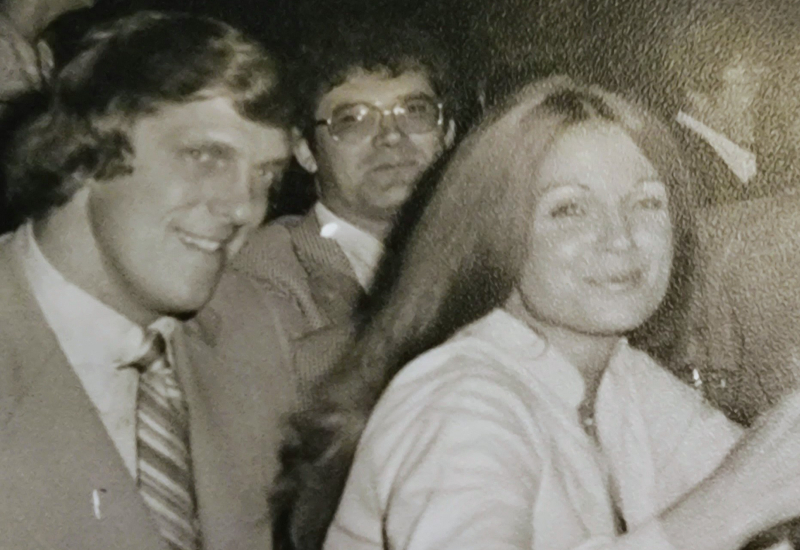
Through his determination, perseverance, and connections in Kansas City, Ed and a partner were able to start a heavy equipment business in 1977, and that company eventually became the largest of its kind in the city and surrounding areas for a number of years. That company grew and expanded to Charlotte, Raleigh, Durham, Tulsa, Oklahoma City, and southeastern Florida with the help of his wife, Beth, and many great people who surrounded him. In 1999, at age 58, Ed sold his companies with the thought of retiring to an island beach somewhere down the road. His 25+ year success in the pumping industry was remarkable and renowned throughout the US, and Ed made many more lifelong friends during those times.
Ed continued to contribute to the NFL through his chapter of the Alumni Organization for the rest of his years. He served as their VP for a while and took much pride in their work for charities of all kinds. He also received a “Father of the Year” honor from the Juvenile Diabetes Foundation for his contributions to their cause.
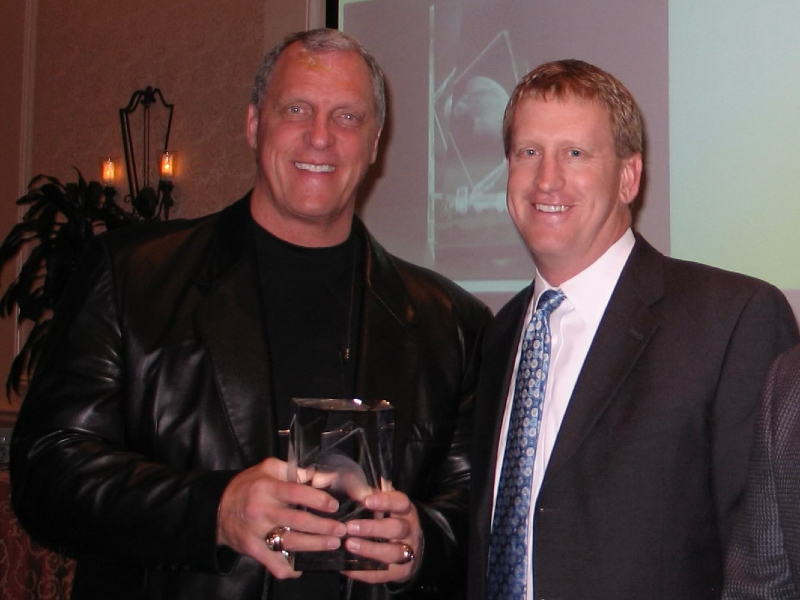
Before CTE completely debilitated his mind, Ed spent a lot of time hanging around his son-in-law’s real estate office, visiting with the realtors, staff, and guests there. He left a marked impression on everybody he struck up conversation with, no matter where it was.

To name the best qualities of Ed would be a list too long to finish. He was kind, comforting, compassionate, fun to be around, and had a way about him that made everyone feel good. He took a true interest in the lives of the people he met and often came to know well. He had a larger than life presence and was incredibly sharp. He had the ability to see all sides on issues and never judged anyone for being who they were. He was a “gentle giant” who loved laughing and learning new things. Before CTE stole his ability to concentrate, he read a lot. He was of the mindset that the world was full of secrets just waiting to be found out and that magic and miracles happened everyday. When he was younger, he stayed in fantastic physical shape and encouraged others to do the same. He loved to travel and see new things, but mostly he delighted in making others happy. Ed connected with other human beings on a level that could rarely be matched and had an understanding and acceptance of the imperfections that come with this earthly existence. He was an extraordinary character who related to the entire spectrum of souls he encountered. He was an exemplary man and that never wavered.
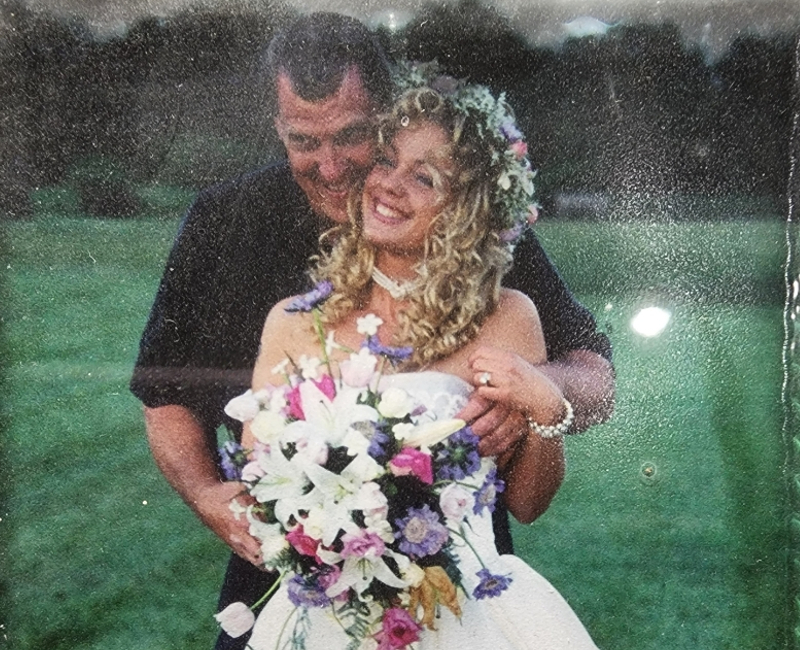
My father died on June 19, 2022, at a rehab facility following a two week hospital stay. He had been sleeping up to 20 hours a day before his death, had a Parkinson’s tremor, could not stand or walk, could not carry a conversation or speak, could no longer eat, and had finally lost all of the will he had fought like a soldier to maintain throughout his journey here on Earth. The man we loved, deeply admired, and relied on for so much of our lives had slowly and painfully disappeared in front of our eyes. His condition was finally irreparable.
We donated Ed’s brain to the Concussion Legacy Foundation per his wishes. He wanted his brain to be studied because we now understand he was aware that its functions were compromised for many, many years after football. His desire was to help others, whether athletes, military, or anyone who had dealt with multiple concussions like he had. We, his family, also believe that he too wanted to give us a last gift of knowing his truth. Dad had been in steady and then severe decline for the last 15-20 years of his life and watching the destruction his brain injuries had caused him, and in turn his family, was agonizing for all of us. We were told he had some type of “dementia,” with some forward thinking doctors alluding to possible CTE and he had gotten a number of opinions over the years about his volatile and diminishing condition. No medicines helped him and no treatment options were offered to him, so we were finally reduced to just trying our best to protect his dignity and keep him as comfortable as we could with the limited resources we had available. Witnessing the effects of CTE caused my family so much heartache but now reflecting on what it all must have felt like for HIM to endure is much worse for us to accept. His loss, his confusion, his frustration, his isolation, and mostly his fear are utterly devastating for us to think about. We feel deep sorrow and enormous guilt about not understanding enough and not knowing how to ease his affliction. CTE took a man with an epic presence and a discerning mind and minimized him to just a shell of that person. We, as his family and friends, would never wish that on our worst enemies.
After receiving the stage 4 CTE diagnosis from BU and learning more about what my dad was dealing with, many of the things that haunted us and perplexed us about his brain functions and personality changes over the years made more sense. Although knowing certainly does not make it easier to bear for us, it does explain why the problems were present and it gives the “void” a name. We can only wish that he too could have gotten that explanation in life. I know we have been asked the question if we think he would go back and do it all again, knowing this would have been the outcome and ultimately his demise? Only he could answer that with certainty.
The biggest differences between now and the days when my father played football is that for many young athletes, sports can be their way out of poverty and can give them hope for a better life. My father made $42,000 during his final season in the NFL, which we now realize was the price he exchanged for his brain. Knowledge today offers athletes more choices, and so many more safety protocols are in place to protect the players in these times. And the money the league pays the players can mean a lifetime of financial security for them and their families in the present day.
The afternoon that we received the results of my dad’s tests, it was beyond painful for those of us who had loved him during his time here. But it also made me even more proud to be a warrior’s daughter. He was a fighter in all that he accomplished and who he was. Against all odds, my dad had a powerful story to tell. We will make it our mission to tell that story and carry on his legacy for as long as we are capable. I could not be more thankful for him.
Ed Lothamer’s favorite parting words were, “Keep smiling.” We will, dad.
